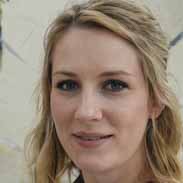AP Human Geography Chapter 8 Terms – Flashcards
Unlock all answers in this set
Unlock answersquestion
balance of power
answer
condition of roughly equal strength between opposing countries or alliances of countries
question
boundary
answer
invisible line that marks the extent of a state's territory
question
city-state
answer
a sovereign state comprising a city and its immediate hinterland
question
colonialism
answer
attempt by one country to establish settlements and to impose its political, econimic, and cultural principles in another territory
question
colony
answer
a territory that is legally tied to a sovereign state rather than completely independent
question
compact state
answer
a state in which the distance from the center to any boundary does no vary significantly
question
elongated state
answer
a state with a long, narrow shape
question
federal state
answer
an internal organization of a state that allocates most powers to units of local government
question
fragmented state
answer
a state that includes several discontinuous pieces of territory
question
frontier
answer
a zone separating two states in which neither state exercises political control
question
gerrymandering
answer
process of redrawing legislative boundaries for the purpose of benefiting the party in power
question
imperialism
answer
contorl of territory already occupied and organized by an indigenous group
question
landlocked state
answer
a state that does not have a direct outlet to the sea
question
microstate
answer
a state that encompasses a very small land area
question
perforated state
answer
a state that completely surrounds another one
question
prorupted state
answer
an otherwise compact state with a large projecting extension
question
sovereignty
answer
ability of a state to govern its territory free from control of it internal affairs by other states
question
state
answer
an area organized into a political unit and ruled by an established government with control over its foreign and internal affairs
question
unitary state
answer
an internal organization of a state that places most power in the hands of central government officials
question
decolonization
answer
the movement of American/European/Asian colonies gaining independence mostly beginning after the post - WWII era: 1946 - on
question
Brandt line
answer
economic division between the wealthy countries of Europe, North America, Japan, and Australia and the generally poorer countries of Asia, Africa, and Latin America
question
Enclave
answer
a minority culture gorup concentrated inside a country that is dominated by a different larger group
question
exclave
answer
a fragmented piece of sovereign territory separated by land from the main part of the state's territory
question
European Union
answer
a supranational organization formed in 2007. The EU acts like a federal government for Europe but lacks some of the administrative aspects of other confederations like the USA. Serves 5 purposes: free trade union, open-border policy, monetary union, judicial union, and legislative and regulatory bodies
question
Shatterbelt
answer
a region caught between stronger colliding external cultural-political forces, under persistent stress, and ofter fragmented by aggressive rivals
question
Shatterbelt theory
answer
Cohen's theory predicted that armed conflicts after 1950 would likely occur in areas within the Inner Crescent or Middle East
question
New World Order
answer
Commonly refers to the post-Cold War era vision (since the fall of Communism in 1989) in which world affairs would not be dominated by the competition between the two nuclear superpowers; a positive and hopeful vision for the future
question
Domino Theory
answer
the idea that if one land in a region came under the influence of Communism, then more would follow in a this effect. A resulting policy out of the Truman Doctrine that promoted containment of communism. The domino theory was used by successive US administrations during the Cold War to justify American intervention around the world
question
Supranationalism
answer
the concept of two or more soveriegn states aligned together for a common purpose
question
Supranational organizations
answer
formed for the purposed of trade alliances, military cooperation, and diplomacy
question
territorial sea
answer
sovereign territory includes the area of seam from shore out to 12 nautical-miles limit. Within 12 nautical miles, all the laws of a country apply
question
high seas
answer
a technical outside of the 12-miles limit. Past that line, cruise ships can open their casinos and ship captains gain the authority to marry couples or arrest thieves onboard their ships
question
Admirality Law
answer
a part of international law that dictates legal procedures on the high seas. Beyond the 200 mile limits, international fishing fleets can hook or net whatever ocean life they choose and in unregulated amounts
question
Constitutional monarchy
answer
the supreme aristocrat remains head of state, but the leader of the elected parliament is the head of government
question
Absolute monarchy
answer
the supreme aristocrat, a king, prince, or duke, is both head of state and head of government, and therefore does not share power with anyone
question
devolution
answer
like centrifugal, a break-down of a state due to conflict
question
Heartland-Rimland Theory
answer
1904 British geographer Halford Mackinder. THis was an effort to define the global geo-political landscape and determine areas of potential future conflict. He identified that agricultural land was the primary commodity that states were interested in. Several states with limited land area wanted to expand their territory as they had done by expanding their colonial empires. However, they also eyed one another's European farming areas. THe largest of these was the Eastern European Steppe, a very productive area of grain cultivation, mostly controlled by the Russian Empire at that time. THis, combined with the mineral and timber-rich regions across the Urals to Siberia, was identified by Mackinder as the Heartland. It was this portion of Earth's surface that bordering RImland states such as the German empire, The Austro-Hungary Empire, and Romania were potential invaders of. The Rimland also contained other landwolves eager to grap at neighboring territory such as France and Italy. Likewise there were seawolves, such as Great Britain and Japan, who would use their navies to leverage geo-political power.



